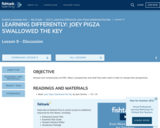
Analyze and compare Joey and Mrs. Maxy’s perspectives and what they both need in order to change their perspectives.
- Subject:
- English Language Arts
- Material Type:
- Homework/Assignment
- Lesson Plan
- Author:
- Fishtank Learning
- Date Added:
- 05/26/2021

Analyze and compare Joey and Mrs. Maxy’s perspectives and what they both need in order to change their perspectives.
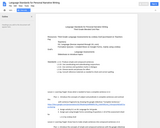
This project combines Google Slideshows (available here), IXL Language activities and assessments purchased on Teachers Pay Teachers to teach third graders key language standards used when doing Personal Narrative writing. The complete lesson plan is available here.
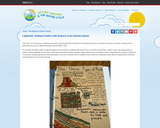
In this article, the author shows how school librarians and elementary teachers can help students create science lapbooks. The article appears in the free, online magazine Beyond Weather and the Water Cycle, which is structured on the seven essential principles of the climate sciences.
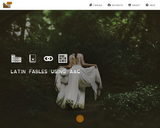
Inspired by the guidelines of the Universal Design for Learning (CAST, 2018), "Universal Latin Fables" wants to give the opportunity to discover Phaedrus' fables to as many students as possible. The web-site uses storytelling process based entirely on the Augmentative and Alternative Communication (AAC). Not only does it make the reading process easier, but it also allows autism spectrum students to understand the fable on several levels.
To whom it turns?
DYSLEXIA:
This website uses the OpenDyslexic font in order to increase readability.
AUTISM SPECTRUM
All the fables can be read using Alternative and Augmentative Communication and PECS symbols offered by SymWriter, specific for autistic people but usable by everyone.
VISUAL IMPAIRMENT
The "Listen" step can be useful to blind students. Furthermore, the website is responsive and the text is scalable.
HEARING IMPAIRMENT
The "Watch" and the "Read" step can be useful to deaf students.
The website is designed to be used by adults and teenagers or by children helped by a parent or a supporting teacher.

Students use Classkick during an English language arts class. The teacher can watch and see how students are responding to their ELA work.

Meg set out to climb up and investigate the rain forest tree canopies — and to be the first scientist to do so. But she encountered challenge after challenge. Male teachers would not let her into their classrooms, the high canopy was difficult to get to, and worst of all, people were logging and clearing the forests. Meg never gave up or gave in. She studied, invented, and persevered, not only creating a future for herself as a scientist, but making sure that the rainforests had a future as well. The resource includes a lesson plan/book card, a design challenge, and copy of a design thinking journal that provide guidance on using the book to inspire students' curiosity for design thinking. Maker Challenge: Your community has many different areas to explore - it might be a park, a grocery store, a forest, or an alley. For some people, it might be difficult to explore these areas because they may have differing abilities. Select one area in your community, and come up with a plan to build a way for it to be more accessible to everyone.
A document is included in the resources folder that lists the complete standards-alignment for this book activity.
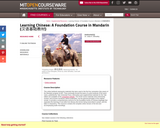
This online textbook represents materials that were used in the first four semesters (two years) of the Mandarin program at MIT. They eventually formed the basis of a print textbook of the same name, published by Yale University Press; information and supplemental materials for the Yale edition are available at the companion website. The OCW course materials were extensively revised, and at times reordered, before publication, but the general principles of the original remain: to provide a comprehensive resource for the foundation levels of Chinese language that separates the learning of oral skills from literary (the former being transcribed in pinyin, and the latter in characters). This resource contains the complete online version of the text and accompanying audio recordings.

Week 35, Day 1---Day 5
Culminating Activity: Opinion Writing
Students will choose their favorite book from the year and begin planning the draft of their advertisement with the graphic organizer. Offer support to students and coach them about the features of an advertisement. Students will present advertisements (and listen and offer feedback or ask questions if their partner is also sharing a review or ad).
Book Review Checklist Sample.
Opinion graphic organizer.

Students will practice vocabulary terms while also working on their speaking skills including eye contact and volume.
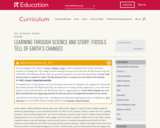
Grade 2: Module 2 of the EL Education K-8 Language Arts Curriculum. In this module, students build their literacy and social-emotional skills through the analysis of literary and informational texts, as they engage in a study of fossils and what they can tell us about how Earth has changed over time. For more information on getting started with the curriculum, please visit https://curriculum.eleducation.org.
To access this resource, you will need to create a free account for the system on which it resides. This partner uses such data for funding requests to keep their resource growing and up-to-date. Also, these resources are openly-licensed for editing and re-sharing, EXCEPT for certain copyright-protected content (authentic texts, photographs, etc.) within the materials that are from outside sources. This outside content may not be reproduced or distributed (outside the scope of fair use or the EL Education Curriculum Terms of Use) without additional permissions from the content owner.
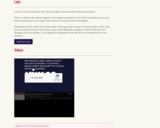
Labs component for Grade 2: Module 2 of the EL Education K-8 Language Arts Curriculum. Labs provide students with an hour of engaging, hands-on play to build habits of character, literacy skills, and module-related content understanding. Labs are directly connected to the content of this language arts module, Fossils Tell of Earth's Changes, and should be implemented alongside the module lessons. For more information on Labs, please visit https://curriculum.eleducation.org/about-k-2-labs-and-ALL-block.
To access this resource, you will need to create a free account for the system on which it resides. This partner uses such data for funding requests to keep their resource growing and up-to-date. Also, these resources are openly-licensed for editing and re-sharing, EXCEPT for certain copyright-protected content (authentic texts, photographs, etc.) within the materials that are from outside sources. This outside content may not be reproduced or distributed (outside the scope of fair use or the EL Education Curriculum Terms of Use) without additional permissions from the content owner.
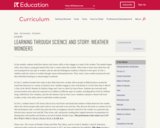
Grade K: Module 2 of the EL Education K-8 Language Arts Curriculum. In this module, students build their literacy and social-emotional skills through the analysis of literary and informational texts, as they engage in a study of weather and its wonders. For more information on getting started with the curriculum, please visit https://curriculum.eleducation.org.
To access this resource, you will need to create a free account for the system on which it resides. This partner uses such data for funding requests to keep their resource growing and up-to-date. Also, these resources are openly-licensed for editing and re-sharing, EXCEPT for certain copyright-protected content (authentic texts, photographs, etc.) within the materials that are from outside sources. This outside content may not be reproduced or distributed (outside the scope of fair use or the EL Education Curriculum Terms of Use) without additional permissions from the content owner.

Labs component for Grade K: Module 2 of the EL Education K-8 Language Arts Curriculum. Labs provide students with an hour of engaging, hands-on play to build habits of character, literacy skills, and module-related content understanding. Labs are directly connected to the content of this language arts module, Weather Wonders, and should be implemented alongside the module lessons. For more information on Labs, please visit https://curriculum.eleducation.org/about-k-2-labs-and-ALL-block.
To access this resource, you will need to create a free account for the system on which it resides. This partner uses such data for funding requests to keep their resource growing and up-to-date. Also, these resources are openly-licensed for editing and re-sharing, EXCEPT for certain copyright-protected content (authentic texts, photographs, etc.) within the materials that are from outside sources. This outside content may not be reproduced or distributed (outside the scope of fair use or the EL Education Curriculum Terms of Use) without additional permissions from the content owner.

One type of fictional narrative is a tall tale. Students will be writing their own ending for a new tall tale they haven’t read yet.
They will read all of the different endings they come up with and compare them with how the author, Mary Pope Osborne, actually ended the story.
Planning and drafting are the first two steps. Students will create a draft using the narrative checklist and start by making the graphic organizer. Students will work around the room on their graphic organizers and share with classmates.
Students will continue to work independently to complete their narratives and add dialogue. They will use the narrative checklist to evaluate their own writing, then revise and edit before writing a final copy.

Using the writing process to write book reviews.
Review:
1.What are the steps in the writing process?
2. What type of writing is a book review?
Book Review Opinion Checklist Sample

Learning to Write Opinions
Review five steps of the writing process
Review three main types of writing
Opinion Checklist Sample
Create graphic organizer model
Students will work around the room on their graphic organizers
Sharing
Drafts
Transition Words for Opinion Texts
Third Grade Editing Checklist
Revise and edit your piece
Peer Revise and Edit
Write or type a final copy
Feedback based on the Opinion Writing Checklist
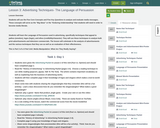
Students will use the Five Core Concepts and Five Key Questions to analyze and evaluate media messages. These concepts will serve as the "Big Ideas" or the "Enduring Understanding" that students will need in order to become media literate. Students will learn the Language of Persuasion used in advertising, specifically techniques that appeal to pathos (emotion), logos (logic), and ethos (credibility/character). They will use these techniques to analyze both print advertisements and television commercials. The lesson will culminate in the analysis of advertisements and the various techniques that they use as well as an evaluation of their effectiveness.This is Part 3 of a 5 Part Unit: Media Manipulation: What Are They Really Saying?
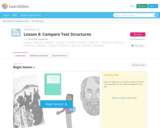
Students evaluate the advantages and disadvantages of different mediums and then compare and contrast the structure of the texts they have viewed/read to consider how the texts use different structures to convey similar ideas.
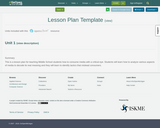
This is a lesson plan for teaching Middle School students how to consume media with a critical eye. Students will learn how to analyze various aspects of media to decode its real meaning and they will learn to identify tactics that mislead consumers.
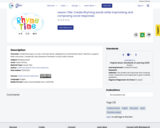
Create Rhyming is a cross-curricular lesson designed by an Elementary Music Teacher to support Math instruction. Created By: Gina Dickerson Powhatan County Public Schools